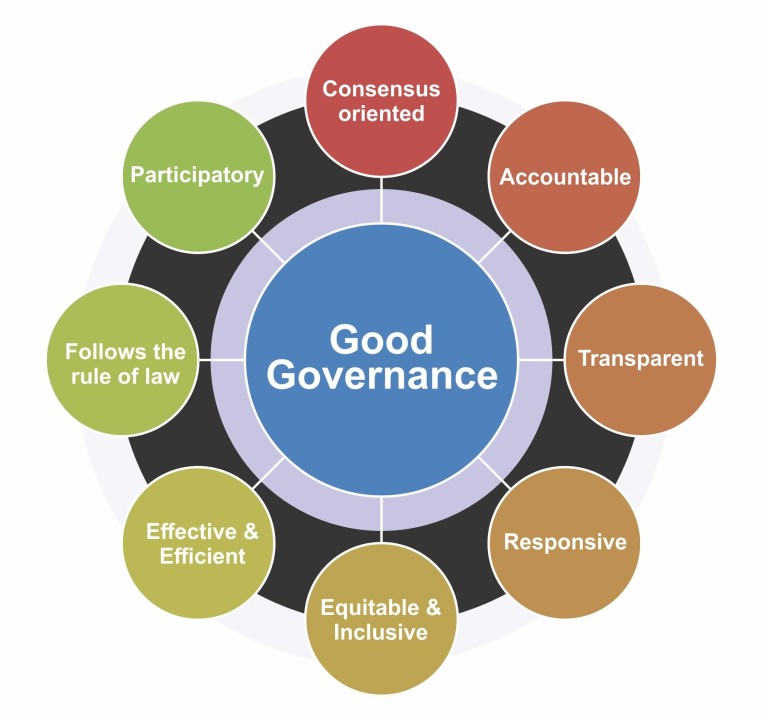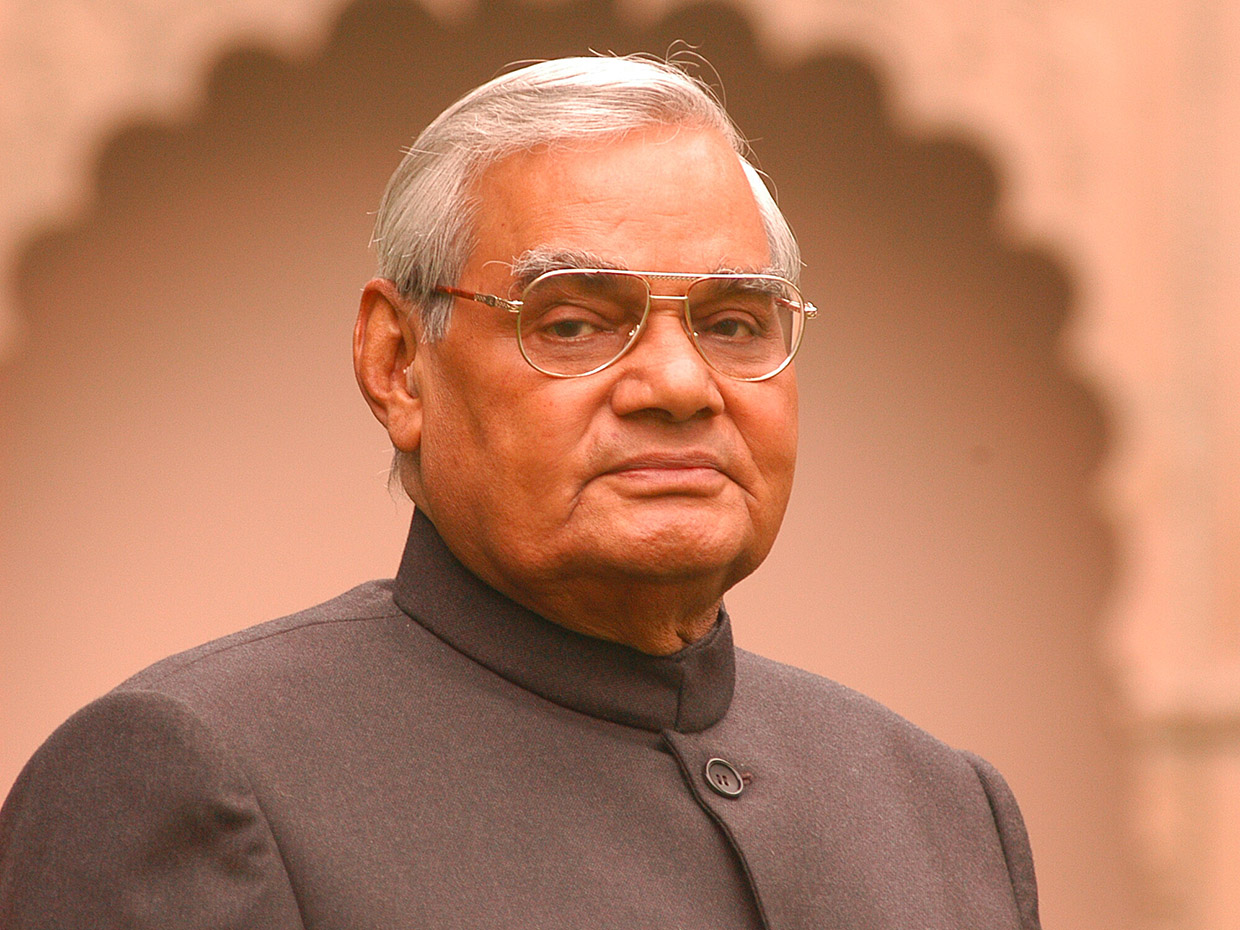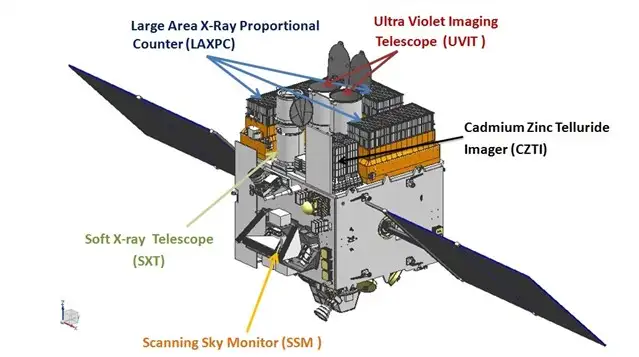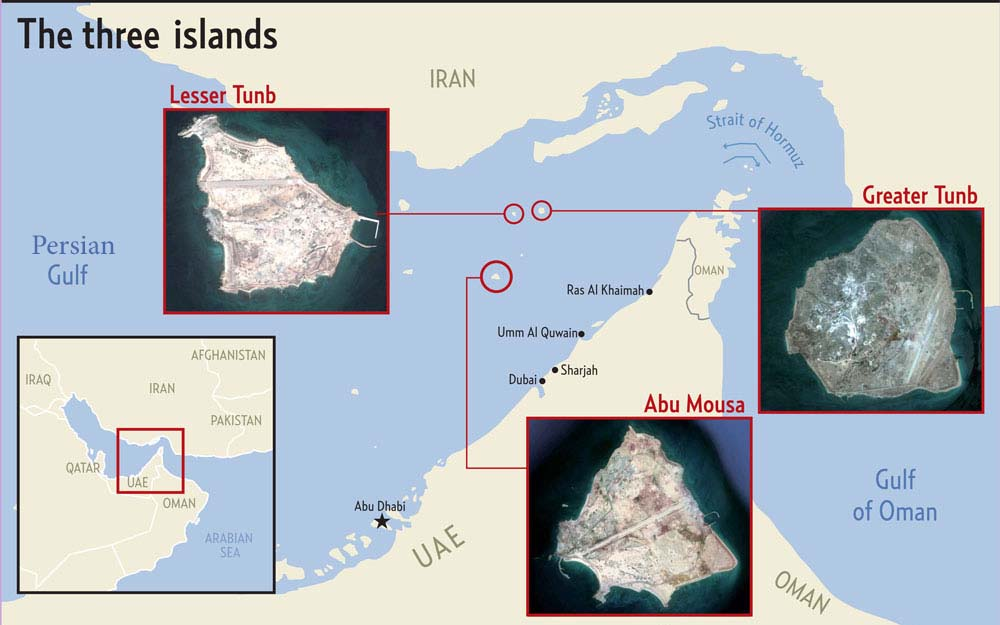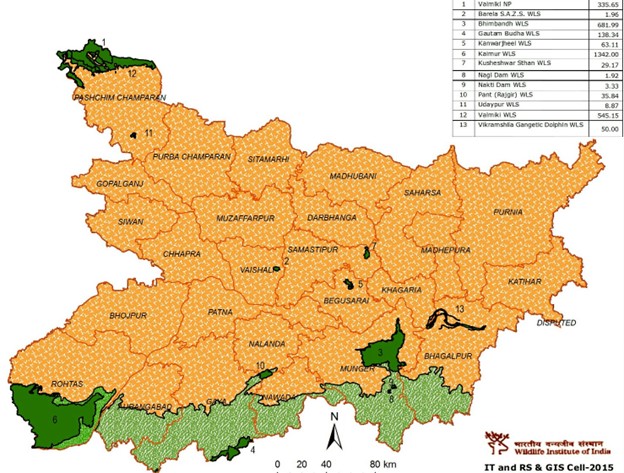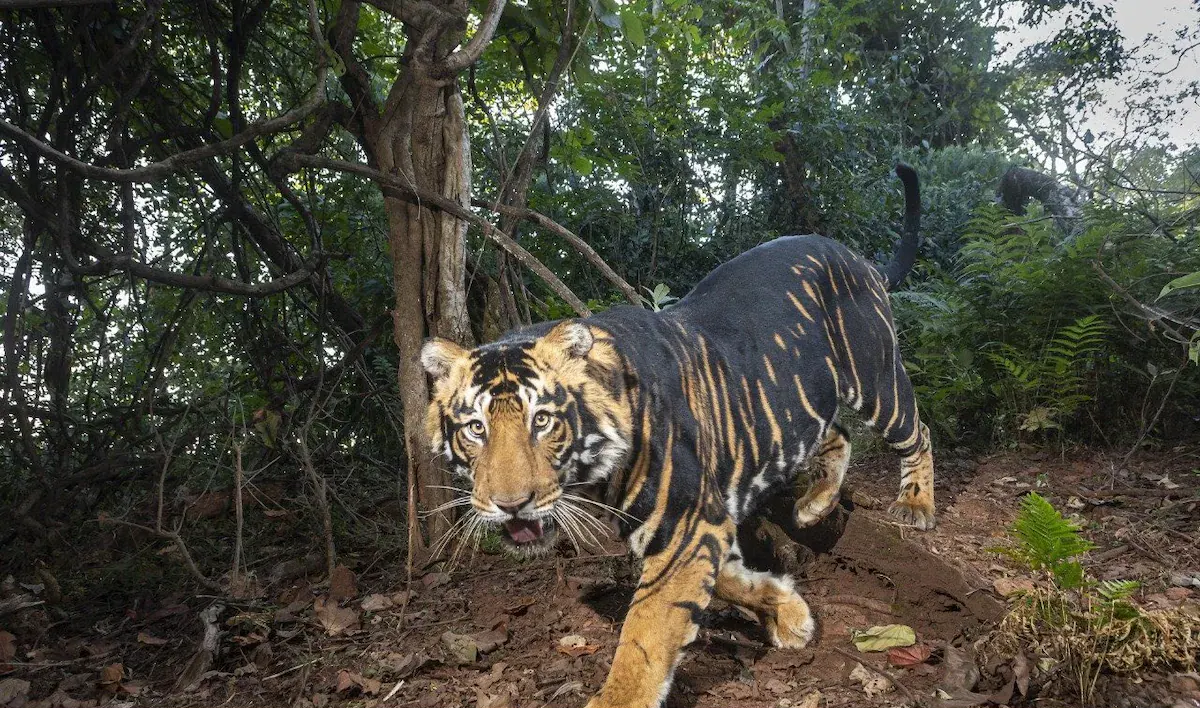Decoding Good Governance
For Prelims: Atal Bihari Vajpayee and Good Governance Day, World Bank, Corruption Perception Index 2022, Central Public Grievance Redress and Monitoring System, Right to Information Act , 73rd and 74th Constitutional Amendments, Unified Payments Interface, Aspirational Districts Program, Citizen Charters.
For Mains: Major Issues Related to Governance in India, Major Initiatives Related to Good Governance in India.
Why in News?
On 25th December, India commemorated Good Governance Day, coinciding with the birth anniversary of former Prime Minister Atal Bihari Vajpayee.
- This yearly event strives to enhance citizen awareness concerning accountability in governance and governmental procedures.
- Three new features on the iGOT (integrated government online training) Karmayogi platform: My iGOT, blended programmes, and curated programmes, were launched on this occasion.
What is Good Governance?
- About:
- Governance refers to the processes, systems, and structures through which organizations, societies, or groups are directed, controlled, and managed.
- Good governance is defined as a set of values through which a public institution conduct public affairs and manages public resources in a way that respects human rights, the rule of law, and the needs of society.
- The World Bank defines good governance in terms of the traditions and institutions by which authority in a country is exercised. This includes:
- the process by which governments are selected, monitored and replaced
- the capacity of the government to effectively formulate and implement sound policies
- the respect of citizens and the state for the institutions that govern economic and social interactions among them.
- Governance refers to the processes, systems, and structures through which organizations, societies, or groups are directed, controlled, and managed.
- Basic Principles of Good Governance:
What is Worldwide Governance Indicators ?
- The World Bank's Worldwide Governance Indicators project evaluates over 200 countries based on six fundamental measures of governance.
- The six indicators are:
- Voice and Accountability
- Political Stability and Absence of Violence
- Government Effectiveness
- Regulatory Quality
- Rule of Law
- Control of Corruption
What are the Major Issues Related to Governance in India?
- Corruption and Bureaucratic Inefficiency: In Corruption Perception Index 2022, India was ranked 85th out of 180 countries, highlighting concerns about bribery and misuse of public funds.
- Inequality and Social Exclusion: Despite economic growth, the gap between rich and poor persists. A 2022 Oxfam report revealed that the richest 1% in India held more than 40% of the country's wealth, while the bottom 50% had just 3%. This widens disparities in access to healthcare, education, and opportunities.
- Ineffective Implementation of Policies and Schemes: Many well-intentioned government programs suffer from poor execution, leading to limited impact.
- In 2023, the CAG found irregularities in the Ayushman Bharat Scheme. Also another CAG report highlights transfer of widow pensions to males in Jharkhand.
- Inadequate Judicial Infrastructure: India's courts are overburdened with a massive backlog of cases, leading to delays in dispute resolution and access to justice, particularly for the marginalized.
- In 2023, the Supreme Court had a pending docket of over 80,000 cases, raising concerns about timely access to legal recourse.
- Environmental Degradation and Climate Change: India faces major challenges like air pollution, water scarcity, and deforestation. The 2023 World Air Quality Report ranked several Indian cities among the most polluted globally, highlighting the weak enforcement of environmental regulations.
- Political Polarization and Weakening Accountability: Increasing partisanship and a focus on electoral gains sometimes overshadow long-term policy planning and public welfare in India.
What are the Major Initiatives Related to Good Governance in India?
- Transparency and Accountability:
- Right to Information Act (2005): Empowers citizens to access government information, promoting transparency and reducing corruption.
- Central Public Grievance Redress and Monitoring System (CPGRAMS): Online platform for registering and tracking grievances against government departments.
- E-Governance Initiatives: Digitization of government services (e.g., online tax filing, property registration) for increased efficiency and reduced human interaction.
- Citizen Charters: Commitment to service standards and timelines by government agencies, enhancing accountability.
- Citizen Participation and Empowerment:
- MyGov platform: Enables citizens to participate in policy discussions, submit ideas, and provide feedback to the government.
- Gram Sabhas: Village-level meetings for participatory decision-making in rural areas.
- Right to Education Act (2009): Ensures free and compulsory education for children aged 6-14, empowering communities.
- Decentralization and Local Governance:
- 73rd and 74th Constitutional Amendments: Empower Panchayats (village councils) and Municipalities with financial and administrative powers, promoting local democracy.
- Aspirational Districts Program: Focuses on improving socio-economic indicators in 112 geographically disadvantaged districts.
- Smart Cities Mission: Development of 100 cities with infrastructure and technology solutions for better living.
- Other Initiatives:
- Digital India Programme: Aims to transform India into a digitally empowered society with widespread access to technology.
- Direct Benefit Transfers: Transfer of subsidies and benefits directly to beneficiaries through bank accounts, reducing leakages and corruption.
- Aadhaar card: Unique identification system for citizens, promoting financial inclusion and service delivery.
- Insolvency and Bankruptcy Code (2016): Streamlines the process of resolving bad debt and facilitating business revival.
- Unified Payments Interface (UPI): Instant real-time mobile payment system developed by the National Payments Corporation of India (NPCI).
- Enables seamless inter-bank transactions using a single mobile app.
Way Forward
- JanData Platform: Create a secure data platform backed by blockchain technology for personalized services and direct participation of citizens in policy decisions.
- It should include Smart Governance Dashboards, displaying key performance initiatives for various government departments, promoting transparency and accessibility.
- Reforming Bureaucracy: Streamlining administrative processes, reducing red tape, and enhancing professionalism and accountability within the public service is also crucial. VIKAS (Variable and Immersive Karmayogi Advanced Support) will be a crucial step in this direction.
- Fast-track Judicial Reforms: Address the backlog of cases, improve infrastructure and efficiency within the court system, and ensure speedy access to justice for all. E-courts and live streaming of court proceedings is a significant step in this direction.
- AI-powered Grievance Redressal: Developing an AI-driven system that analyzes public complaints, identifies patterns, and automatically directs them to the relevant authorities for swift resolution.
- Reimagining Citizen Engagement: Establish community-based innovation labs across rural and urban areas in supervision of Urban Local Bodies and Panchayats, empowering citizens to create local solutions to local problems in collaboration with government agencies.
- Futuristic Education Curriculum: Integrate skills like critical thinking, digital literacy, and data analysis into the education system, preparing future generations for active participation in a technology-driven governance landscape.
Therefore, India must follow the principle of "Minimum Government, Maximum Governance" aligning with Sustainable Development Goal (SDG) 16: Peace, Justice, and Strong Institutions.
Atal Bihari Vajpayee
- Born on 25th December, 1924, in Gwalior, now part of Madhya Pradesh, Atal Bihari Vajpayee entered politics during the Quit India Movement of 1942.
- Served as Prime Minister in 1996 and 1999, becoming the first since Jawaharlal Nehru to achieve successive mandates.
- Won 9 Lok Sabha and 2 Rajya Sabha elections, earning the title of India’s ‘Best Parliamentarian’ in 1994.
- Received Padma Vibhushan in 1994 and awarded the Bharat Ratna, India's highest civilian honor, in 2015.
UPSC Civil Services Examination Previous Year Question (PYQ)
Q. Effectiveness of the government system at various levels and people’s participation in the governance system are interdependent". Discuss their relationship in the context of India. (2016)
Q. What do you understand by the terms ‘governance’, ‘good governance’ and ‘ethical governance’? (2016)
Progress in Ending Child Marriage
For Prelims: Sustainable Development Goal 5.3, UNICEF, Prohibition of Child Marriage Act in 2006, Child Marriage Prohibition Officers, Dhanalakshmi Scheme.
For Mains: Major Factors Associated with Child Marriage, Legislative Framework and Initiatives Related to Child Marriage in India.
Why in News?
A recent study published in 'The Lancet Global Health' journal sheds light on the prevailing scenario of child marriage in India, revealing both progress and setbacks in the fight against this deeply rooted practice.
What are the Major Trends Highlighted by the Study?
- Status in India:
- Girl child marriages declined from 49% in 1993 to 22% in 2021. Boy child marriages reduced from 7% in 2006 to 2% in 2021, indicating an overall national decline.
- However, between 2016 and 2021, the progress plateaued, with certain states experiencing a troubling rise in child marriages.
- Notably, six states witnessed an increase in girl child marriages, including Manipur, Punjab, Tripura, and West Bengal.
- Eight states observed a rise in boy child marriages, encompassing Chhattisgarh, Goa, Manipur, and Punjab.
- Global Trends: Globally, progress against child marriage has been notable, but the Covid-19 pandemic threatens this advancement, putting approximately 10 million more girls at risk of child marriage over a decade.
What are the Major Factors Associated with Child Marriage?
- Economic Factors: Families living in poverty might see marriage as a means to reduce the economic burden by transferring responsibility for the girl to her husband's family.
- In some regions, the tradition of providing dowry can influence families to marry off daughters at a young age to avoid higher dowry costs later.
- Also, in areas prone to natural disasters or agrarian crises, families facing economic hardships might resort to early marriage as a coping mechanism or to secure stability.
- Social Norms and Traditional Practices: Long-held customs and traditions often prioritize early marriage as a social norm, perpetuating the practice across generations.
- Pressure from the community or family to conform to prevalent customs and traditions lead to early marriages, particularly for girls.
- Gender Inequality and Discrimination: Unequal power dynamics and limited agency for girls compared to boys contribute significantly to early marriage.
- Lack of access to education and opportunities for girls often pushes families to opt for early marriages, viewing it as a way to secure their daughters' futures.
Note
UNICEF categorizes child marriage as a human rights violation due to its adverse impacts on the development of both girls and boys.
- Sustainable Development Goal 5.3 states that Child marriage elimination is pivotal in achieving Sustainable Development Goal 5, aiming for gender equality and empowerment of women and girls by 2030.
- According to the UN, 1 in 5 young women worldwide (19%) were married in childhood in 2022.
What are the Legislative Framework and Initiatives Related to Child Marriage in India?
- Legislative Framework: India enacted the Prohibition of Child Marriage Act in 2006, establishing the legal age for marriage at 21 for men and 18 for women.
- Section 16 of the Prohibition of Child Marriage Act allows State Governments to appoint 'Child Marriage Prohibition Officers (CMPO)' for specific areas.
- CMPOs are responsible for preventing child marriages, collecting evidence for prosecutions, counseling against promoting or aiding such marriages, raising awareness about their harmful effects, and sensitizing communities
- Government has introduced a bill namely 'the Prohibition of Child Marriage (Amendment) Bill, 2021 for raising the age of marriage of women to 21 years to make it at par with the men.
- Section 16 of the Prohibition of Child Marriage Act allows State Governments to appoint 'Child Marriage Prohibition Officers (CMPO)' for specific areas.
- Related Initiatives:
- Dhanalakshmi Scheme: It is a conditional cash transfer scheme for a girl child with insurance coverage.
- It also aims to eliminate child marriage by offering parents insurance coverage of medical expenses and encouraging the education of the girl child.
- Schemes like Beti Bachao Beti Padhao (BBBP), also aims to empower girls through education, health and protection, and discourage child marriage.
- Dhanalakshmi Scheme: It is a conditional cash transfer scheme for a girl child with insurance coverage.
Note
Odisha Government has devised a comprehensive strategy to tackle child marriage. They track girls' school attendance and village presence and utilize the "Advika" platform for girls aged 10 to 19.
- Guidelines are in place to declare villages free of child marriage, with incentives for vulnerable tribal groups.
- Districts implement various approaches, such as maintaining girl databases and mandating Aadhaar numbers in marriages.
Way Forward
- Economic Empowerment Initiatives: Offering vocational training and entrepreneurship opportunities to girls at risk, providing viable alternatives to early marriage.
- Facilitate access to microloans for families, encouraging income generation and reducing financial pressure for early marriages.
- Community Engagement through Art and Media: Organizing art-based workshops, theater performances, or community storytelling sessions to engage and educate on the consequences of child marriage.
- Collaborate with local artists and influencers to create impactful campaigns via music, street art, or short films.
- Peer Education and Mentorship Programs: Training young leaders as advocates against child marriage, empowering them to educate and mentor peers within their communities.
- Introducing comprehensive education modules within schools, fostering discussions and awareness among students.
UPSC Civil Services Examination Previous Year Question (PYQ)
Q. Examine the main provisions of the National Child Policy and throw light on the status of its implementation. (2016).
Press and Registration of Periodicals Bill, 2023
For Prelims: Press and Registration of Books Act, 1867, Metcalfe Act, Licensing Regulations by John Adams, Press and Registration of Periodicals Bill, 2023 .
For Mains: Press Regulation in India, Key Features of Press and Registration of Periodicals Bill, 2023
Why in News?
Recently, the Lok Sabha passed the Press and Registration of Periodicals Bill, 2023, repealing the colonial era law of the Press and Registration of Books Act, 1867.
- The Bill has already been passed by Rajya Sabha in August 2023.
What are the Key Features of Press and Registration of Periodicals Bill, 2023?
- Registration of Periodicals: The Bill provides for the registration of periodicals, which include any publication containing public news or comments on public news.
- Periodicals do not include books or scientific and academic journals.
- Whereas, the act provides for the registration of newspapers, periodicals, and books. It also provided for the cataloguing of books.
- Books have been taken away from the purview of the bill, as books as a subject are administered by the Ministry of Human Resource and Development.
- Periodicals do not include books or scientific and academic journals.
- Registration Protocols for Publications: The Bill enables periodical publishers to register online via the Press Registrar General and specified local authority.
- Also, Publishing a periodical is prohibited for individuals convicted of terrorism or actions against state security.
- Whereas, the act mandated a declaration to the District Magistrate, who sent it to the Press Registrar for newspaper publication.
- Foreign Periodicals: Reproduction of foreign periodicals within India necessitates prior approval from the central government. Specific protocols for registering such periodicals will be outlined.
- Press Registrar General: This Bill introduces the role of the Press Registrar General of India, responsible for issuing registration certificates for all periodicals.
- Additionally, their duties encompass maintaining a periodical register, establishing guidelines for periodical titles, verifying circulation figures, and managing registration revisions, suspensions, or cancellations.
- Printing Press Registration: Declarations regarding printing presses can now be submitted online to the Press Registrar General, deviating from the previous requirement of declarations made before the District Magistrate.
- Suspension and Cancellation of Registration: The Press Registrar General holds authority to suspend a periodical's registration for a minimum of 30 days (extensible up to 180 days) due to various reasons including furnishing false information, discontinuity in publication, or providing inaccurate annual statements.
- Failure to rectify these issues could result in registration cancellation.
- Further grounds for cancellation include similarity in titles with other periodicals or convictions related to terrorism or acts against national security by the owner/publisher.
- Penalties and Appeals: The Bill empowers the Press Registrar General to levy penalties for unregistered periodical publication or failure to furnish annual statements within specified timelines.
- Non-compliance with these directives may lead to imprisonment for up to six months.
- Additionally, provisions for appeals against refusal of registration certificates, suspension/cancellation of registration, or imposed penalties are available, with a 60-day window to file appeals before the Press and Registration Appellate Board.
What are the other Pre-Independence Legislations Related to Press Regulation?
- Censorship under Lord Wellesley (1799): Enacted due to French invasion fears, imposing strict wartime press controls, including pre-censorship.
- Relaxed later by Lord Hastings in 1818, removing pre-censorship.
- Licensing Regulations by John Adams (1823): Instituted penalties for starting or operating a press without a license, later extended to cover various publications.
- Primarily targeted Indian language newspapers or those led by Indians, leading to the cessation of Rammohan Roy’s Mirat-ul-Akbar.
- Press Act of 1835 (Metcalfe Act): Repealed the restrictive 1823 ordinance, earning Metcalfe the title "Liberator of the Indian press."
- Mandated precise declarations by printers/publishers about their premises and allowed cessation as required.
- Licensing Act during the 1857 Revolt: Imposed further licensing restrictions due to the 1857 emergency.
- Augmented existing registration procedures, granting the government power to halt the circulation of any printed material.
- Vernacular Press Act, 1878: Designed to regulate the vernacular press, suppress seditious writing, and prevent discord among different communities.
- Required printers and publishers of vernacular newspapers to sign a bond refraining from disseminating anti-government or divisive content.
- Decisions made by the magistrate were final without any avenue for appeal in court.
- Newspaper (Incitement to Offences) Act, 1908: Empowered magistrates to seize press properties publishing objectionable content inciting violence or murder.
- Bal Gangadhar Tilak, a militant nationalist leader, faced sedition charges and was transported to Mandalay, sparking widespread protests and strikes.
- Indian Press Act, 1910: Local governments could demand security at registration, penalize offending newspapers, and require free copies for scrutiny.
- Impeded press freedom by imposing stringent regulations similar to those in the Vernacular Press Act.
Sanitation Systems
For Prelims: Sanitation Systems, On-site Sanitation Systems, Twin Pits and Septic Tanks, Urban Sewer Systems, Faecal Sludge Treatment Plants (FSTPs).
For Mains: Sanitation Systems, Government policies and interventions for development in various sectors and issues arising out of their design and implementation.
Why in News?
Used water that goes into ground, open space, into open drains or canals should be channelized into proper Sanitation Systems for public health and environmental preservation.
- While rudimentary sanitation was introduced by ancient civilisations around 4000 BC, the modern sanitation system was built in London around the 1800s.
What are the Types of Sanitation Systems?
- On-site Sanitation Systems (OSS):
- Twin pits, septic tanks, bio-digester toilets, bio-tanks, and urine diversion dry toilets serve as prevalent OSS in rural or spacious urban settings. These systems passively treat used water, containing fecal sludge or septage, catering to varying spatial constraints.
- Twin Pits and Septic Tanks:
- Twin Pits Functionality: It consists of two pits utilized alternately, twin pits facilitate liquid soaking into the ground while solids settle and degrade.
- One pit remains inactive for two years, ensuring pathogen-free contents for reuse, but unsuitable for rocky soils.
- Septic Tanks Operation: Septic tanks are watertight; as used water flows through the tank, solids settle at the bottom, while scum – mostly oil and grease – floats to the top.
- While settled solids in septic tanks degrade over time, the accumulated faecal sludge and scum must be removed at regular intervals.
- This is done using trucks equipped with vacuum pumps that suck the faecal sludge out and transport it to treatment facilities called Faecal Sludge Treatment Plants (FSTPs).
- Twin Pits Functionality: It consists of two pits utilized alternately, twin pits facilitate liquid soaking into the ground while solids settle and degrade.
- Urban Sewer Systems:
- In densely populated urban areas that lack space within properties, an underground network of pipes – a.k.a. sewers – collects and conveys the used water to treatment facilities.
- This network of interconnected pipes transports used water from toilets, bathrooms, kitchens to treatment facilities by gravity or with the help of pumps. Sewers have machine-holes for maintenance and to remove blockages.
- This used water, called sewage, is transported by sewers to Sewage Treatment Plants (STPs).
What are the Functions of Treatment Facilities?
- Faecal Sludge Treatment Plants (FSTPs):
- Varieties of FSTPs: FSTPs operate in either mechanical (utilizing equipment like screw presses) or gravity-based systems (employing sand drying beds). These facilities manage faecal sludge, aiming for effective containment, conveyance, and treatment, often referred to as faecal sludge management (FSM).
- In smaller towns or villages, OSS-FSM prevails.
- Reuse and Disposal: Treated solids from FSTPs, when composted with organic municipal waste, become reusable in agriculture.
- The treated water is commonly repurposed for landscaping within FSTP premises, highlighting a sustainable approach.
- Varieties of FSTPs: FSTPs operate in either mechanical (utilizing equipment like screw presses) or gravity-based systems (employing sand drying beds). These facilities manage faecal sludge, aiming for effective containment, conveyance, and treatment, often referred to as faecal sludge management (FSM).
- Sewage Treatment Plants (STPs):
- Comprehensive Water Treatment: STPs employ physical, biological, and chemical processes to eliminate pollutants from used water.
- Similar to FSTPs, the primary stage separates solids, followed by purification where microorganisms digest solids, and eventual disinfection.
- Advanced Techniques and Varied Types: Advanced STPs employ methods like membrane filtration to enhance water reuse.
- These facilities come in mechanised and non-mechanised types, selected based on technical and financial capacities of city administrations.
- Comprehensive Water Treatment: STPs employ physical, biological, and chemical processes to eliminate pollutants from used water.
Note
- FSTPs are smaller and can coexist with Solid Waste Management sites or be decentralised, located closer to sludge sources. In contrast, STPs are larger, centralised facilities serving whole communities or urban areas, usually situated near water bodies to discharge treated water.
What is the Need for Such a Complex Sanitation System?
- As water moves through its various domestic and non-domestic uses, it accumulates natural as well as human-introduced impurities – including organic matter, nutrients from detergents, pathogens such as bacteria, viruses, and parasites, and heavy metals from solvents and pesticides. It also includes solids like soil, debris, minerals, and salts.
- To ensure that used water doesn’t pollute or cause public health issues as a result of these impurities when reintroduced into natural environments, it’s essential to contain, remove, and treat used water before it is disposed of or reused.
- Odour and aesthetics have long been the main drivers of sanitation, but it wasn’t until their connections with public and environmental health became clear that people realised that using an “out of sight” approach was inadequate.
Conclusion
- There have been significant improvements in public health since sanitation systems were invented, but universal access to safely managed sanitation services remains a challenge.
- Overcoming issues like poorly designed and built systems and unsafe operation and maintenance practices are crucial to effectively manage used water and protect our increasingly precious water bodies and groundwater aquifers.
Magnetars and Related AstroSat's Discovery
Why in News?
AstroSat, India’s first multi-wavelength space-based observatory, has detected bright sub-second X-ray bursts from a new and unique neutron star with an ultrahigh magnetic field (magnetar).
- Scientists performed the timing and spectral analysis of this magnetar using two instruments onboard AstroSat: the Large Area X-Ray Proportional Counter (LAXPC) and Soft X-Ray telescope (SXT).
What are Magnetars?
- Magnetars are neutron stars having an ultrahigh magnetic field that are much stronger than the terrestrial magnetic field (over one quadrillion times stronger than the magnetic field of Earth).
- High-energy electromagnetic radiation emitted by magnetars results from the decay of their powerful magnetic fields.
- They display strong temporal variability, typically including a slow rotation, a rapid spin-down, bright but short bursts going on up to months-long outbursts.
- One such magnetar, called SGR J1830-0645, was discovered in October 2020 by NASA's Swift spacecraft.
- It is relatively young (about 24,000 years) and an isolated neutron star.
Note
A neutron star is a dense and compact stellar object that forms from the remnants of a massive star's core after a supernova explosion. These stars are among the densest objects known in the universe, packing an immense mass into a relatively small size.
- The discovery of pulsars in 1967 provided the first evidence of the existence of neutron stars. Pulsars are neutron stars that emit pulses of radiation once per rotation
What is AstroSat?
- About: AstroSat is the first dedicated Indian astronomy mission aimed at studying celestial sources in X-ray, optical and UV spectral bands simultaneously.
- It was launched in September, 2015 onboard PSLV-C30 from Satish Dhawan Space Centre, Sriharikota.
- Mission operations center at ISTRAC Bengaluru manages the task of operating AstroSat.
- Payload:
- Major Scientific Observations of AstroSat:
- Spotted stars forming in gas streams, offering insights into how galaxy clusters behave.
- It found over 75,000 young stars in the Andromeda Galaxy's bulge, a first discovery.
- Black holes in a binary system were seen spinning almost as fast as possible by LAXPC and SXT payloads.
UPSC Civil Services Examination, Previous Year Questions (PYQs)
Q. Recently, scientists observed the merger of giant ‘blackholes’ billions of light-years away from the Earth. What is the significance of this observation? (2019)
(a) ‘Higgs boson particles’ were detected.
(b) ‘Gravitational waves’ were detected.
(c) Possibility of intergalactic space travel through ‘wormhole’ was confirmed.
(d) It enabled the scientists to understand ‘singularity’
Ans: (b)
Disputed Persian Gulf Islands
Why in News?
Tensions between Iran and the United Arab Emirates (UAE) have escalated as a joint statement issued at the 6th Arab-Russian Cooperation Forum in Morocco challenged Iran’s claims to three disputed islands in the Persian Gulf.
- A joint statement signed by Russia and Arab countries has called for a peaceful resolution to the Iran-UAE conflict over disputed islands. In response, Iran summoned the Russian envoy to express its protest against the joint statement.
What is the Dispute Over the Persian Gulf Islands?
- The dispute involves three islands in the strategic Strait of Hormuz, namely the Greater Tunb, Lesser Tunb, and Abu Musa.
- Iran claims that the islands have been part of Persian states since the ancient past until they were occupied by the British in the early 20th century.
- Iran took control of the three islands after British forces withdrew in 1971. It considers them an "inseparable" part of its territory.
- It also says that It has an agreement with Sharjah, one of the UAE’s seven emirates, which gives it the right to administer Abu Musa and station troops there.
- The UAE asserts ownership of the disputed islands, with Ras al-Khaimah(City in the UAE) claiming Greater and Lesser Tunbs, and Sharjah claiming Abu Musa.
- The UAE contends that Iran forcibly seized the islands from Ras al-Khaimah just before the formation of the Emirati Federation in 1971.
Persian Gulf
- The Persian Gulf is a shallow sea in the Indian Ocean that borders the Arabian Peninsula and southwestern Iran. It's also known as the Arabian Gulf.
- The Persian Gulf is bordered by Iran, Iraq, Kuwait, Saudi Arabia, Bahrain, Qatar, the United Arab Emirates, and Oman.
- The Persian Gulf is connected to the Gulf of Oman by the Strait of Hormuz.
- The Strait of Hormuz is situated between Qeshm Island and the Iranian coast in the north and the Musandam Peninsula of the Arabian Peninsula in the south.
- Persian Gulf countries are major producers of crude oil and natural gas.
Increase Tiger Numbers in Valmiki Tiger Reserve
Why In News?
Recently, the National Tiger Conservation Authority (NTCA) had officially announced the increase in tiger population in Valmiki Tiger Reserve (VTR).
- It witnessed the growth in the number of big cats from 31 (2018) to 54 (2023).
- The Bihar government is waiting to obtain NTCA approval for declaring Kaimur Wildlife Sanctuary as the state’s second tiger reserve after VTR.
Why Has the Number of Tigers in VTR Increased?
- A total ban on sand and stone mining inside VTR, and strict restrictions on mining in its eco-sensitive zone, helped increase grassland cover.
- An increase in grassland cover thus helps in supporting the prey population, in turn increasing the chances of the carnivores’ survival.
- The reserve is dedicated to managing and sustaining the tiger population by raising awareness among local residents and monitoring mining activities in and around the area to minimize human-wildlife conflict.
- The NTCA placed the reserve in the ‘Very Good’ category.
What are the Important Facts of Valmiki Tiger Reserve (VTR)?
- The VTR is the only tiger reserve in Bihar, which forms the easternmost extent of the Himalayan Terai forests in India.
- The VTR is located in Bihar’s West Champaran district, bordering Nepal to its north and Uttar Pradesh to its west.
- Situated in the Gangetic plains bio-geographic region, the vegetation of this Tiger Reserve is a combination of Bhabar and Terai regions.
- According to the Forest Survey of India Report 2021, 85.71% of its total area is covered by forest cover.
- Wild mammals found in the forests of Valmiki Tiger Reserve include tiger, sloth bear, leopard, wild dog, bison, wild boar etc.
- Rivers Gandak, Pandai, Manor, Harha, Masan and Bhapsa flow through various parts of the reserve.
What is the National Tiger Conservation Authority (NTCA)?
- About:
- National Tiger Conservation Authority (NTCA) is a statutory body under the Ministry of Environment, Forests and Climate Change.
- It was established in 2005 following the recommendations of the Tiger Task Force.
- It was constituted under enabling provisions of the Wildlife (Protection) Act, 1972, as amended in 2006, for strengthening tiger conservation, as per powers and functions assigned to it.
- Objectives:
- Providing statutory authority to Project Tiger so that compliance of its directives becomes legal.
- Fostering accountability of Center-State in management of Tiger Reserves, by providing a basis for MoU with States within our federal structure.
- Providing for an oversight by Parliament.
- Addressing livelihood interests of local people in areas surrounding Tiger Reserves.
UPSC Civil Services Examination, Previous Year Question (PYQ)
Q1. Consider the following protected areas: (2012)
- Bandipur
- Bhitarkanika
- Manas
- Sunderbans
Which of the above are declared Tiger Reserves?
(a) 1 and 2 only
(b) 1, 3 and 4 only
(c) 2, 3 and 4 only
(d) 1, 2, 3 and 4
Ans: (b)
Q2. From the ecological point of view, which one of the following assumes importance in being a good link between the Eastern Ghats and the Western Ghats? (2017)
(a) Sathyamangalam Tiger Reserve
(b) Nallamala Forest
(c) Nagarhole National Park
(d) Seshachalam Biosphere Reserve
Ans: (a)
Black Tigers in Similipal Tiger Reserve
The Indian government informed the Rajya Sabha that there are 10 black tigers (melanistic tigers) in India, all of which are exclusively found in Odisha's Similipal tiger reserve.
- Black Tigers are not a distinct species but a rare colour variant of Bengal Tiger. The coat colour and patterning of black tigers are due to a single mutation in the Transmembrane Aminopeptidase Q (Taqpep) gene. This mutation is called pseudo-melanism.
- Similipal Tiger Reserve was designated in 1956, part of Project Tiger since 1973, and declared a biosphere reserve in 1994.
- It is part of the UNESCO World Network of Biosphere Reserves and the Similipal-Kuldiha-Hadgarh Elephant Reserve popularly known as Mayurbhanj Elephant Reserve.
- Similipal is rich in wildlife, housing tigers, elephants, different bird and amphibian species.
- Two tribes, Erenga Kharias and Mankirdias, inhabit Similipal and engage in traditional agricultural activities.
Read more: Black Tigers
MedTech Mitra: Revolutionizing India's Healthcare Innovations
Recently, the Ministry of Health and Family Welfare launched 'MedTech Mitra,' a transformative platform aimed to empower MedTech Innovators and advance healthcare solutions.
- It seeks to shape and finalize the research, knowledge, and logic of aspiring MedTech innovators while aiding them in securing regulatory approvals.
- It aims to streamline innovation and service, reducing the nation's reliance on imported medical devices, currently at 80%.
- MedTech refers to "Medical Technology," which encompasses a wide range of technological innovations, devices, equipment, and solutions used in the field of healthcare.
- Examples of MedTech include devices like MRI machines, pacemakers, insulin pumps and surgical instruments, among others.
Kudumbashree Performed Chavittunatakam
A total of 504 members of the Kudumbashree Mission, participated in a Chavittunatakam performance to set a world record.
- The Chavittunatakam performance told the story of the Kudumbashree Mission, which was set up in 1998 under the People’s Plan Campaign.
- Mission was launched as a poverty eradication programme aimed at ending intergenerational transmission of poverty and its growth into a women’s empowerment movement was narrated by the women on stage with all the drama that accompanies a Chavittunatakam performance.
- Chavittunatakam is a drama form that has a great following in the coastal districts of central Kerala.
- The Kudumbashree performance also won the World Talent Record.
- It was organized as part of the campaign to popularize the ongoing National Saras Mela 2023.
- Saras Mela has been organized with the aim of empowering women and giving market to the goods produced by Self Help Groups.
- It was organized as part of the campaign to popularize the ongoing National Saras Mela 2023.
Read More: Self Help Group Kudumbashree
PT Instructors Come Within Definition of Teachers: SC
The Supreme Court has recently held that Physical training instructors (PTIs) come within the definition of “teachers” though they may not necessarily take classes within the four walls of a building.
- Highlighting the multifaceted responsibilities of a physical director, including organizing sports activities, managing sports facilities, and overseeing tournaments, the court underlined the inherent educational aspect of a PTI's role.
- SC was hearing a case involving a sports officer/PTI contesting the university's retirement age policy, seeking parity with other teaching faculty members.

